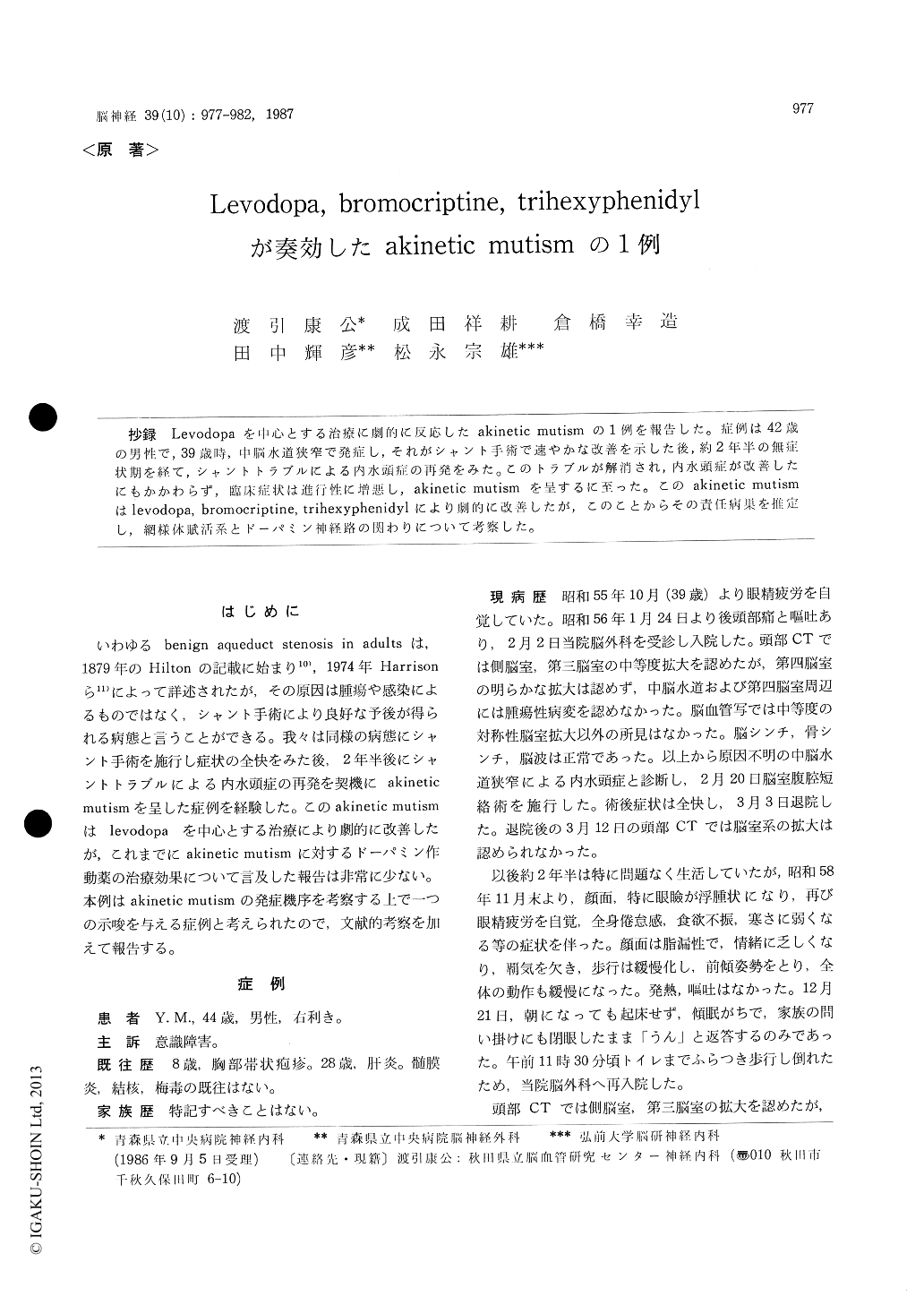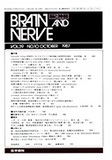Japanese
English
- 有料閲覧
- Abstract 文献概要
- 1ページ目 Look Inside
抄録 Levodopaを中心とする治療に劇的に反応したakinetic mutismの1例を報告した。症例は42歳の男性で,39歳時,中脳水道狭窄で発症し,それがシャント手術で速やかな改善を示した後,約2年半の無症状期を経て,シャントトラブルによる内水頭症の再発をみた。このトラブルが解消され,内水頭症が改善したにもかかわらず,臨床症状は進行性に増悪し,akinetic mutismを呈するに至った。このakinetic mutismはlevodopa, bromocriptine, trihexyphenidylにより劇的に改善したが,このことからその責任病巣を推定し,網様体賦活系とドーパミン神経路の関わりについて考察した。
A case of akinetic mutism was reported with reference to a marked improvement by levodopa, bromocriptine and trihexyphenidyl.
A 39-year-old male, first seen on February 2, 1981, had an occipitalgia, accompanied by nausea and vomiting. For several months before this consultation, the patient had suffered from asthenopia. Brain CT scan and cerebral angiogramdemonstrated internal hydrocephalus due to aque-duct stenosis of unknown etiology. After a ven-triculoperitoneal shunt operation on February 20, 1981, he completely recovered. Two years and a half after the shunt insertion he had no difficulty in his daily life. He reentered the hospital on December 21, 1983, because of personality change, mental deterioration and bradykinesia. Brain CT scan showed recurrent hydrocephalus resulting from shunt blockage. Following the shunt revision, hydrocephalus was resolved. Nevertheless, the patient did not return to his previous state. And he became bed-ridden, incontinent of urine, and unable to take fluids or foods, following which he went into a state of akinetic mutism. Other neurological findings were as follows : upward gaze palsy, impaired convergence, convergence nystagmus, plastic rigidity of neck and all four limbs, and diffuse hyperreflexia with right Ba-binski's sign. Abnormal involuntary movement was not seen. On March 27, 1984, levodopa therapy was instituted and on April 2, trihexyphenidyl was combined with levodopa. Shortly after ad-ministration of levodopa and trihexyphenidyl, akinetic mutism began to improve, but upward gaze palsy was not affected. He began to speak and could walk unassisted by the end of July. But from the end of August, akinesia and muscle rigidity slightly deteriorated and urinary incon-tinence reappeared, when trihexyphenidyl was discontinued because of precise assessment of its efficacy. The discontinuation did not worsen his condition. The symptoms were again improved by adding bromocriptine to the regimen, with much better improvement upon resumption of trihexyphenidyl.
The first hydrocephalus in the patient was con-sistent with benign aqueduct stenosis in adults (Harrison et al., 1974). After asymptomatic period, recurrent hydrocephalus due to shunt malfunction caused akinetic mutism which was more progres-sive in spite of restoration of shunt function and was resolved by levodopa, bromocriptine and trihexyphenidyl. It was suggested central dopa-mine system was incriminated in developing akinetic mutism.

Copyright © 1987, Igaku-Shoin Ltd. All rights reserved.


